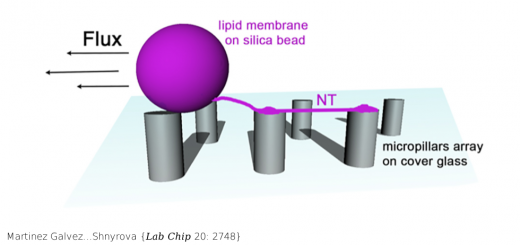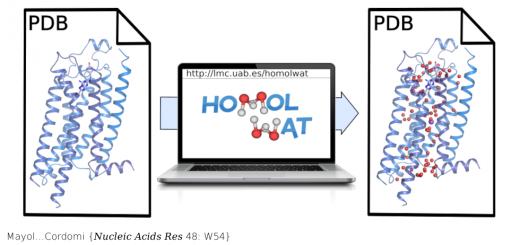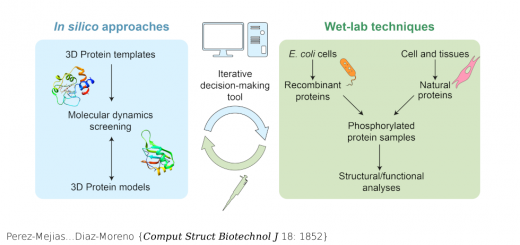Mannelli…Lakadamyali {ACS Appl Mater Interfaces 8: 15058}
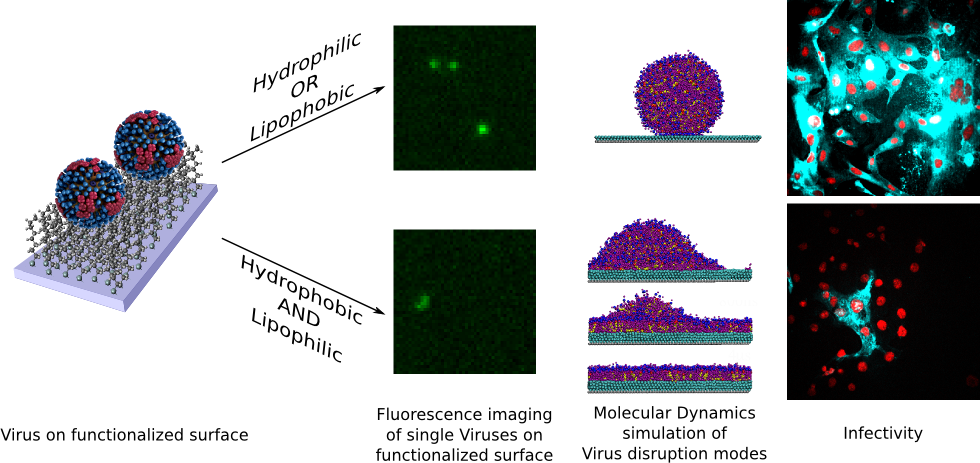
Effects of functionalized surfaces on viral infectivity. From left:
cartoon representation of viruses in contact with the functionalized
surfaces and their real-time fluorescence imaging; coarse-grained
molecular dynamics simulation of the disruption modes induced by the
functionalized surfaces; and the imaging of the infectivity level on
cells treated with viruses previously incubated with the surfaces.
Functionalized Surfaces with Tailored Wettability Determine Influenza A Infectivity
Mannelli I, Reigada R, Suárez I, Janner D, Carrilero A, Mazumder P, Sagués F, Pruneri V, Lakadamyali M.
ACS Appl Mater Interfaces 2016 Jun.; 8: 15058.
Surfaces contaminated with pathogenic microorganisms contribute to their transmission and spreading. The development of “active surfaces” that can reduce or eliminate this contamination necessitates a detailed understanding of the molecular mechanisms of interactions between the surfaces and the microorganisms. Few studies have shown that, among the different surface characteristics, the wetting properties play an important role in reducing virus infectivity. Here, we systematically tailored the wetting characteristics of flat and nanostructured glass surfaces by functionalizing them with alkyl- and fluoro-silanes. We studied the effects of these functionalized surfaces on the infectivity of Influenza A viruses using a number of experimental and computational methods including real-time fluorescence microscopy and molecular dynamics simulations. Overall, we show that surfaces that are simultaneously hydrophobic and oleophilic are more efficient in deactivating enveloped viruses. Our results suggest that the deactivation mechanism likely involves disruption of the viral membrane upon its contact with the alkyl chains. Moreover, enhancing these specific wetting characteristics by surface nanostructuring led to an increased deactivation of viruses. These combined features make these substrates highly promising for applications in hospitals and similar infrastructures where antiviral surfaces can be crucial.
PubMed: 27243266. Doi: 10.1021/acsami.6b02779.
